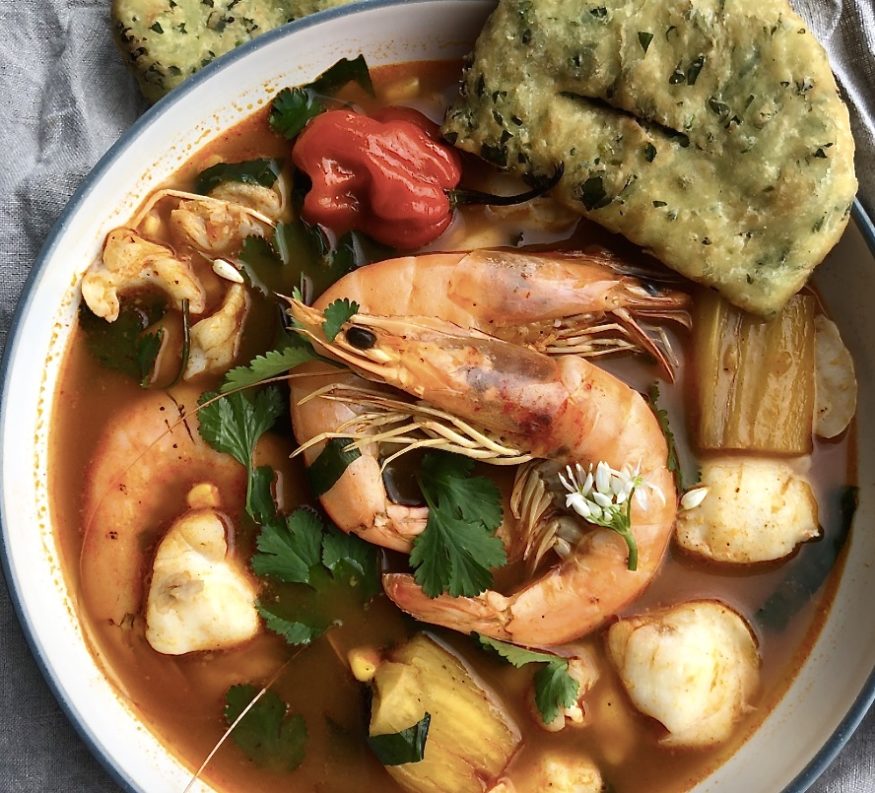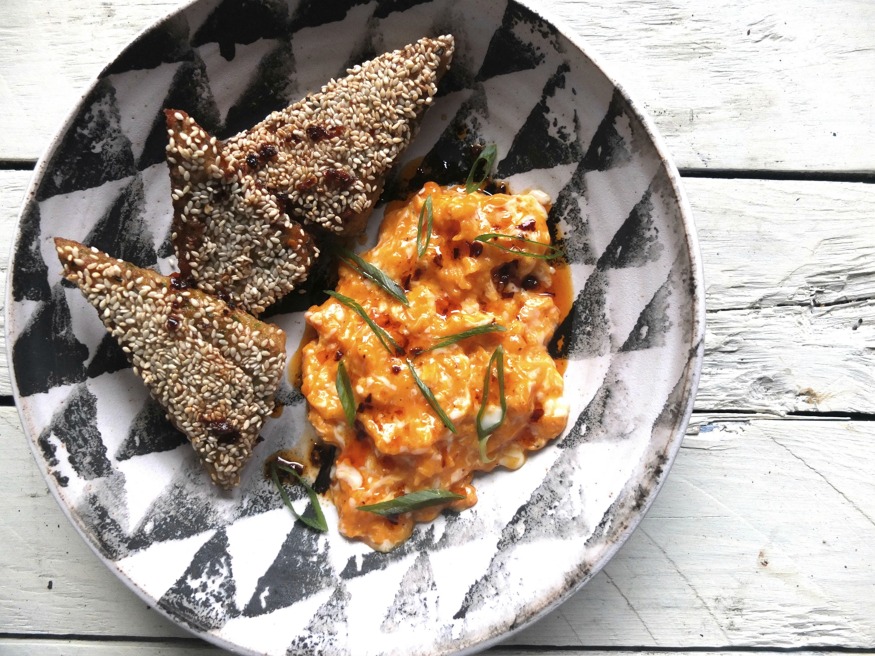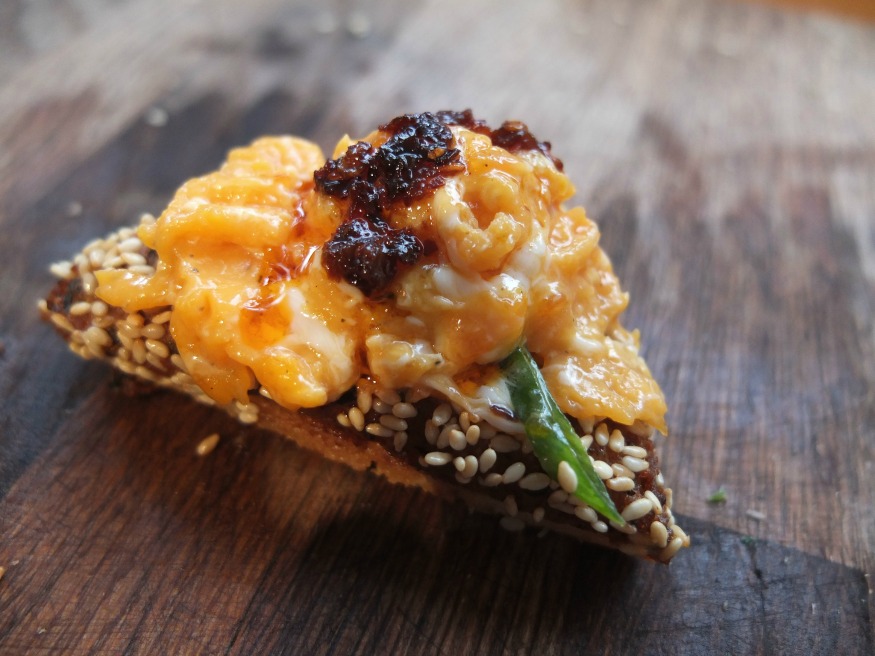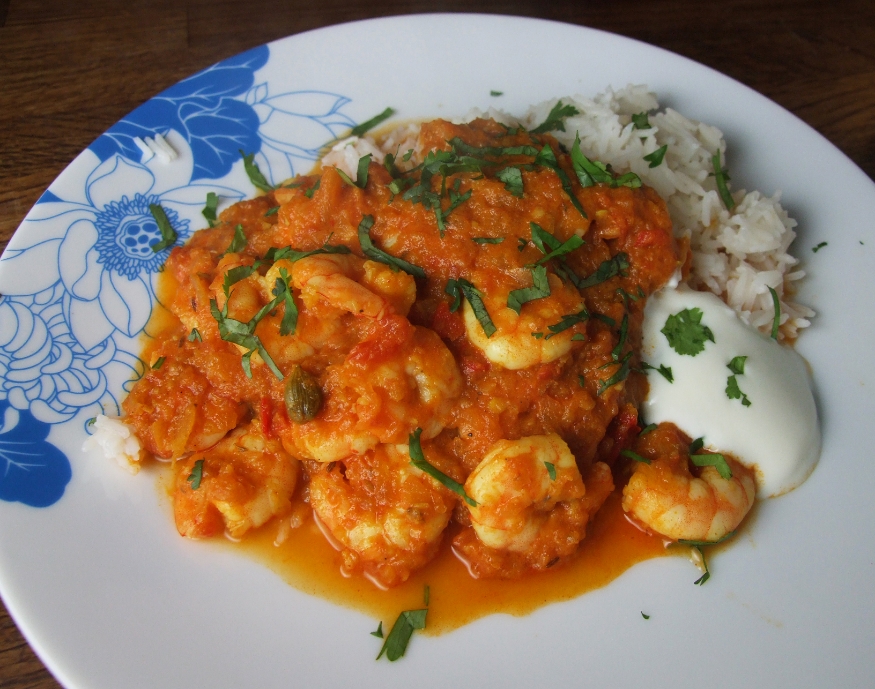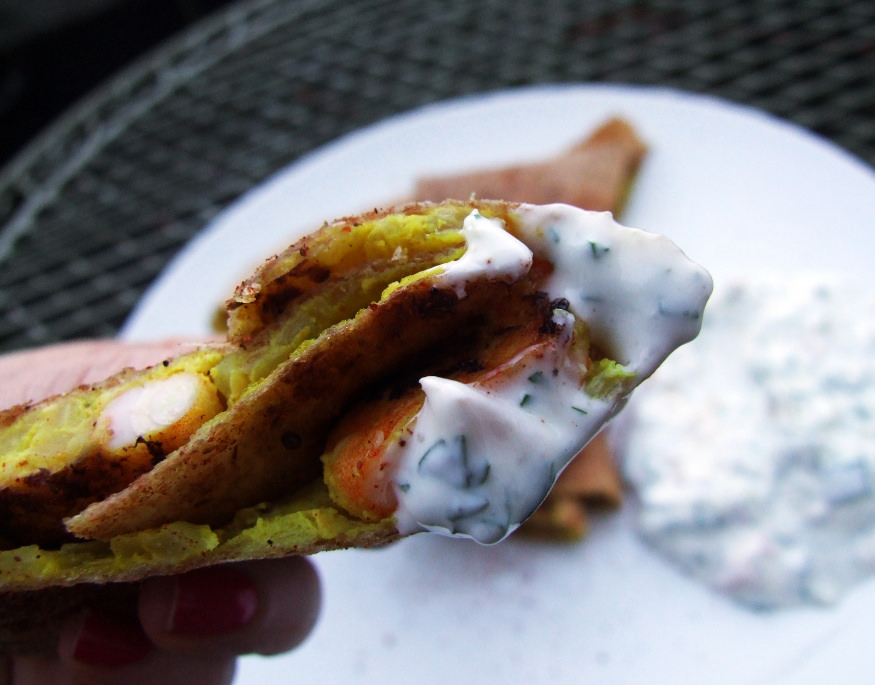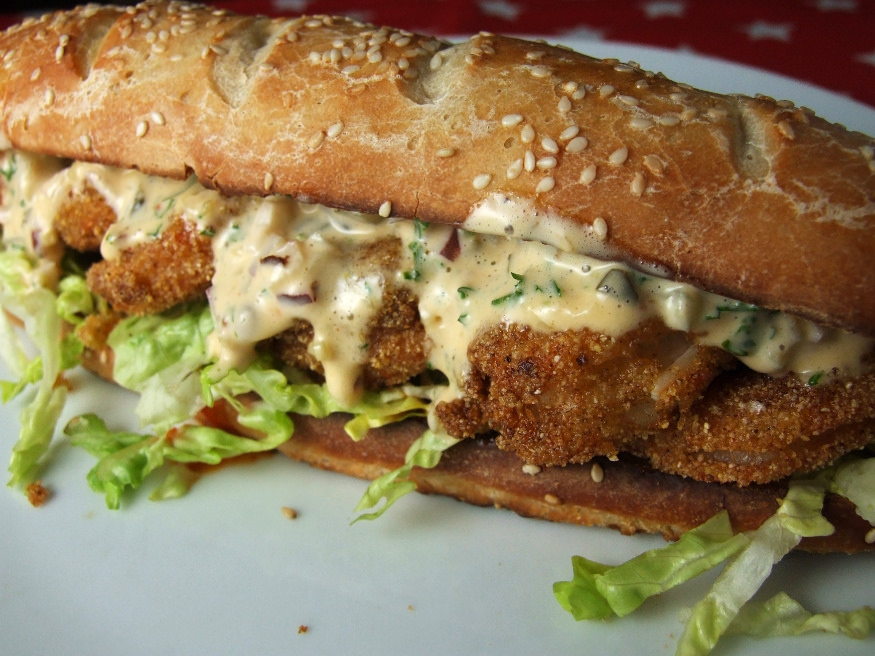
I have a major soft spot for classic American sandwiches (no surprises there) and recently I’ve been focused on tracking down one of the all time greats – the po’ boy – in London. It’s been a fruitless endeavour, a particular low point being my recent experience at The Diner, in Soho. I left feeling queasy, cheated and strongly convinced I should try making one at home. A
A po’ boy, in case you’re not familiar, is a sandwich originating from Louisiana, so called because it was once the staple food of labourers – the poor boys. There are many variations but the most common fillings seem to be roast beef, fried shrimp or fried oysters. A ‘dressed’ po’ boy (like this one) comes loaded with lettuce, tomato, a piquant mayo, pickles, onion and hot sauce. Gimme.
As always when one delves into these things, I found that the question of what makes an authentic po’ boy is a sensitive one. The bread should, apparently, be a New Orleans French style baguette but I had a lot of trouble finding a good-looking recipe and there seems to be controversy around the idea of the perfect crust and interior texture. Some argue that it’s impossible for home cooks to ever replicate an authentic New Orleans bread outside the area, as it’s the high humidity and unique climate in general (partly below sea level) that make the bread just so, while others say it’s the unique properties of the water. It was at this point I gave up (I’m sure you understand) and decided that a nice soft sub roll wouldn’t be the end of the world and in fact would work nicely against the crunch of fried prawns. After a failed attempt with a duff recipe, I played around and came up with a roll I was happy with – soft and sweet with a decent sturdy crust.
I bought some fat, fresh prawns and seasoned them with a mixture of polenta/cornmeal (no sweet ‘n sour chicken ball-esque batter this time, The Diner) and a fantastic New Orleans spice blend I was sent by Richard Myers, a Louisiana native. It’s a mixture of Red Sea salt; garlic; onion; spices, including paprika; white, black and red peppers; citrus; thyme; oregano and rosemary. Phew. It’s incredibly intense and seriously tasty.
I loaded the subs with a bed of shredded lettuce followed by the crisp, spicy fried prawns and plenty of home-made mayo mixed with chopped pickles, onion, mustard and parsley, thinned and soured with pickle juice and lemon. As per the videos of famous po’ boy vendors I watched on YouTube, I finished the sandwich with an extra splash of hot sauce. Wow. The Americans really have invented some incredible sandwiches. This was a world apart from that grim recreation I suffered weeks earlier; it winds me up, the way people take a beautiful idea and make it as cheaply and with as little love as possible. I’ve never been to Louisiana, and this recipe may not be entirely authentic, but I can promise you that it was made, and eaten, with a Whole Lotta Love.
Shrimp Po’ Boys
For the subs (makes 4)
1 packet fast action dried yeast
20g caster sugar
225ml warm water
25 butter, melted and cooled
1 teaspoon salt
375g plain flour
1 egg white
Sesame seeds
Dissolve the sugar in the water, add the yeast and leave to activate. Melt the butter and allow to cool almost completely. In the mixing bowl of an electric mixer with a dough hook (or of course you could mix by hand), combine the flour, yeast mixture, butter and salt.
Knead really well, then cover with cling film and allow to rise until doubled in size. After this time, lightly dust 2 greased baking trays with polenta/cornmeal then split the dough into four and shape into long sub-shapes. Slash each several times with a knife, brush over egg white then sprinkle with sesame seeds. Let double in size again.
Bake at 200C for about 18-20 minutes or until golden brown all over.
For the prawns
6 raw king prawns per person, shelled and de-veined
Polenta/cornmeal
New Orleans seasoning, available from Richard Myers (e-mail to purchase)
Beaten egg
Spread a plate with a mixture of 3 tablespoons polenta to 2 scant tablespoons New Orleans seasoning. Dip each prawn in the egg, followed by the seasoning mix.
Deep fry the prawns for 2-4 minutes, depending on size. You can also shallow fry them, but make sure you have a couple of cm of oil in the pan and turn them over halfway through. Drain on kitchen paper.
For the mayo
2 egg yolks
Oil (vegetable or groundnut are both good but don’t use olive oil, certainly not extra virgin)
2 chopped sweet dill pickles
1 teaspoon American mustard
1/2 finely chopped red onion
Juice of 1/2- 1 whole lemon
1 teaspoon juice from the pickle jar
Chopped parsley
Salt and pepper
Put the egg yolks in a clean bowl and whisk them together. Whisk in the oil, adding a few drops at a time and making sure each bit of oil is fully incorporated before adding the next. As you whisk in more oil and the mayo starts to thicken, you can start adding it in very slightly larger quantities until you are steadily adding it in a thin stream. The key with mayo is to be cautious with the oil until you get a feel for making it. If you add too much at once, it will split. If this happens, don’t despair. Take a fresh egg yolk in a clean bowl and begin adding the split mixture into it, very slowly, just as if it were the oil. This should bring it back.
Add all the other ingredients, adjusting to taste (e.g. you may want a little more lemon juice, a little more salt)
To dress the po’ boy
Split and toast the sub, then load with shredded lettuce (I used little gem), the prawns, the mayo and a dribble of (mild) hot sauce. It’s traditional to use tomatoes I believe, but I just couldn’t face it when there was snow on the ground. DEVOUR!

